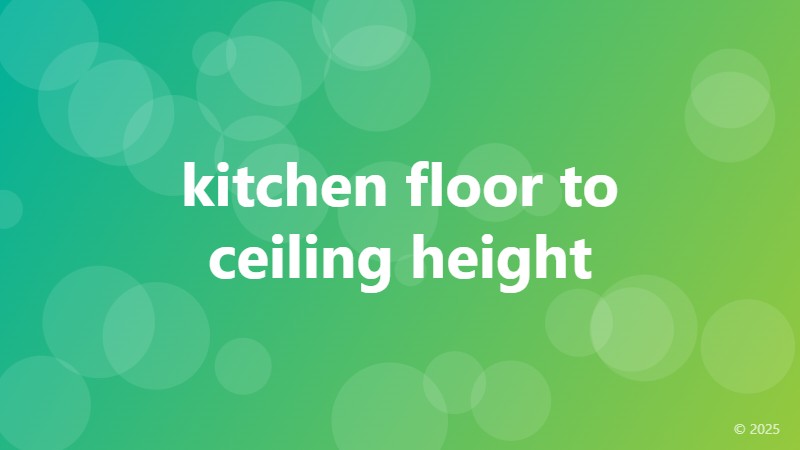kitchen floor to ceiling height

Designing the Perfect Kitchen: Understanding Kitchen Floor to Ceiling Height
Kitchen floor to ceiling height is a crucial aspect of kitchen design that can greatly impact the overall aesthetic and functionality of the space. When it comes to designing a kitchen, many homeowners focus on the layout, cabinetry, and countertops, but the ceiling height is often overlooked. However, a well-designed kitchen floor to ceiling height can make a significant difference in the ambiance and usability of the kitchen.
The Standard Kitchen Floor to Ceiling Height
In most residential kitchens, the standard ceiling height ranges from 8 to 10 feet (2.4 to 3 meters). This height is considered optimal as it provides ample space for cabinets, lighting, and ventilation, while also creating a sense of openness and airiness. However, kitchen floor to ceiling height can vary depending on the style and design of the kitchen.
Factors to Consider When Designing Kitchen Floor to Ceiling Height
When designing a kitchen, there are several factors to consider when determining the ideal floor to ceiling height. These include:
- Room layout and functionality: A higher ceiling can create a sense of spaciousness, but may also make the room feel less intimate. A lower ceiling can create a cozier atmosphere, but may limit the amount of storage and cabinetry.
- Cabinetry and storage: Tall ceilings can accommodate larger cabinets and more storage, while lower ceilings may require more creative storage solutions.
- Lighting and ventilation: Higher ceilings can provide more space for lighting fixtures and ventilation systems, improving the overall ambiance and air quality.
Designing for Different Kitchen Styles
Depending on the style and design of the kitchen, the ideal floor to ceiling height may vary. For example:
- Modern kitchens: Modern kitchens often feature high ceilings, often exceeding 10 feet, to create a sense of openness and minimalism.
- Traditional kitchens: Traditional kitchens may feature lower ceilings, typically around 8 feet, to create a cozier and more intimate atmosphere.
- Rustic kitchens: Rustic kitchens often feature exposed beams and lower ceilings, typically around 8-9 feet, to create a warm and cozy ambiance.
Conclusion
In conclusion, kitchen floor to ceiling height is a critical aspect of kitchen design that can greatly impact the overall aesthetic and functionality of the space. By considering factors such as room layout, cabinetry, lighting, and ventilation, homeowners can design a kitchen that meets their needs and style. Whether you prefer a modern, traditional, or rustic kitchen, understanding the importance of kitchen floor to ceiling height can help you create a kitchen that is both beautiful and functional.